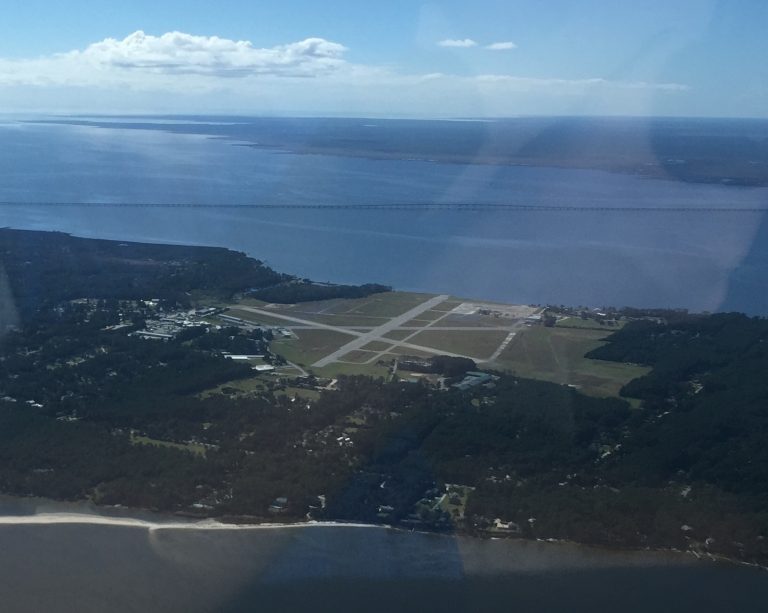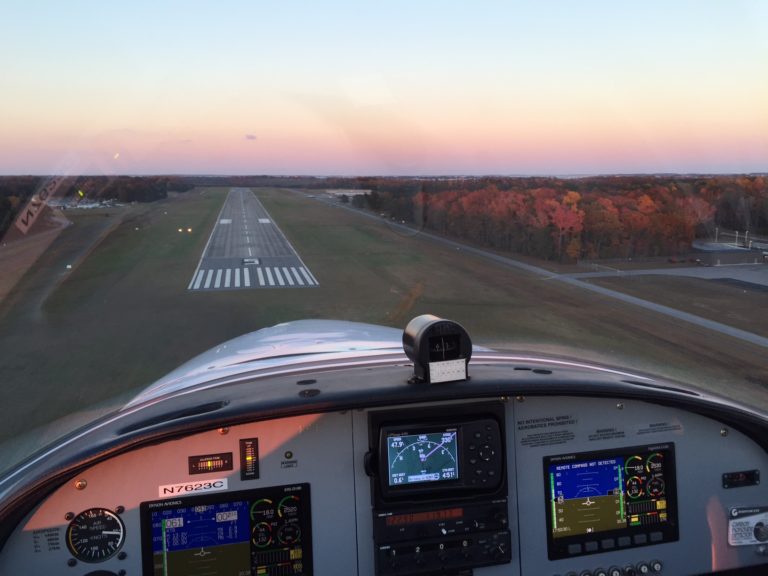It’s been noted a number of times that the Outer Banks was ground zero for the Battle of the Atlantic in WWII. German wolf packs, preying on shipping off the coast, took a horrific toll on allied shipping, and the United States was initially slow to respond.
Once the response to the German attacks gained momentum and got going, it was robust.
There is evidence of the response throughout this area. Two great examples of that legacy are the region’s airports.
Dare County Regional Airport
When the Japanese attacked Pearl Harbor, there was an airport under construction on the north end of Roanoke Island. According to records, the Navy had plans on the books to build an Auxiliary Air Station on Hatteras Island, but opted to take on the airfield that was already partially built.
It took another 15 months to finish the project, and on March 3, 1943, NAAS (Naval Auxiliary Air Station) Manteo was commissioned. The airfield served two purposes: the Navy and Coast Guard used it for anti-submarine patrols, and the base was also used for special training for squadrons of naval fighters and bombers. Some of the most iconic naval aircraft crews of the war were trained at the Roanoke Island facility— F4F Wildcats, F6F Hellcats, TBF Avengers and F4U Corsairs.

There is no clear record of how many men were stationed at NAAS Manteo, although the Dare County Times, the predecessor to the Coastland Times, reported in March of 1944 that US Representative Herbert Bonner “… has been advised by the Secretary of the Navy that an additional expenditure of $400,000 has been approved for improvements at the Manteo Airport. Representative Bonner advises that Bachelor Officer Quarters accommodate 125 men and enlisted men’s barracks to accommodate 103 men . . .”
The airport was impressive. On a visit to the area, the Rotary governor for Eastern North Carolina told the Dare County Times, “It strikes me that after the war you folks are going to have such an influx of visitors and permanent residents, you are going to have a mighty hard time finding room for them. Why with that new airport a fellow as far away as New York could hop in his plane and be here in no time— and they’ll be traveling that way after the war.”
The airport was decommissioned in 1945 and turned over to the county in 1947.
Currituck County Airport
The Currituck County Airport located on the road to Elizabeth City doesn’t have the pedigree its neighbor to the south does, but it still owes its existence to WWII.
With Langley Airfield just up the road in Newport News, the US Army Air Corps (the predecessor to the Air Force) felt an emergency landing field was needed. Rural Currituck County was the perfect location.

Construction began in 1942 and in less than a year, a 4000’ concrete runway was completed and given the designation Barco FS-1 or Flight Strip 1.
There does not seem to be a record of how often the emergency flight strip was used, but evidence seems to indicate that use was minimal. Immediately after the war, Barco FS-1 was closed and two years later, in 1947, the government turned it over to Currituck County.
Although not as busy as the Dare County Regional Airport, traffic has increased at the airport. The county has funded substantial improvements, including lengthening the runway to 5500’. The COA Aviation School is located at the airfield.
